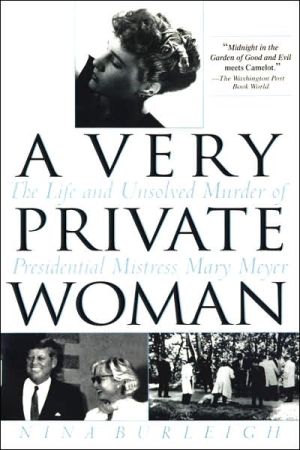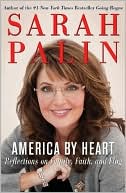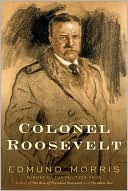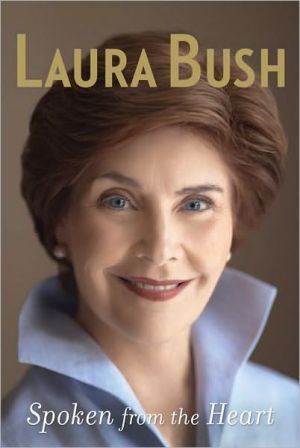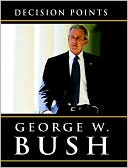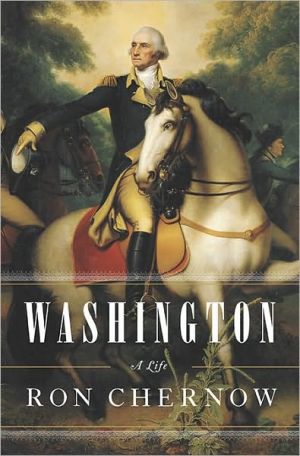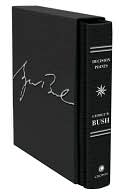A Very Private Woman: The Life and Unsolved Murder of Presidential Mistress Mary Meyer
In 1964, Mary Pinchot Meyer, the beautiful, rebellious, and intelligent ex-wife of a top CIA official, was killed on a quiet Georgetown towpath near her home. Mary Meyer was a secret mistress of President John F. Kennedy, whom she had known since private school days, and after her death, reports that she had kept a diary set off a tense search by her brother-in-law, newsman Ben Bradlee, and CIA spymaster James Jesus Angleton. But the only suspect in her murder was acquitted, and today her...
Search in google:
As the wife of a top CIA official and mistress to President John F. Kennedy, Mary Meyer 'knew things.' Was that why she was murdered? Journalist Nina Burleigh attempts to answer this question as she explores Meyer's links to such notables as spymaster James Angleton and LSD guru Timothy Leary in this fascinating account of the life and death of A Very Private Woman. Glamour Prove[s] that every Washington sex scandal is juicy in its own way.
Introduction\ Anyone wanting to write about a member of the silent generation of women that mothered the baby boom and married the cold warriors confronts a peculiar obstacle: Many of these women believe their lives were utterly unremarkable. The cold war wives review years spent raising children and keeping house, arranging dinner parties for dignitaries, making art, or getting jobs. They find their personal histories bland compared to their husbands', men with war wounds on their bodies and secrets of state in their brains, men whose turf ranged from Havana to Moscow and Paris to Bucharest, and whose work altered world history.\ When the woman in question had an affair with a married president of the United States and then died violently, the obstacle of humility is compounded by embarrassment and sorrow. Mary Pinchot Meyer's sister and closest friend say they burned her diary, and a CIA official destroyed her other papers, obliterating her voice from history. Her closest surviving friends made an informal pact not to discuss her. Many people who will talk are persuaded—for reasons that have more to do with Mary's access to powerful men and with the tenor of the times than with available facts about the woman herself—that Mary Meyer "knew things" she wasn't supposed to know, and that her death is somehow related to that knowledge. Still others are quite happy to talk, but thirty years and advancing age have dimmed their memories. The protectiveness of her friends, the shame and sorrow of her family, and the political intrigue during her years in Washington have combined to make her life and death mythic, a part of the Kennedy assassination conspiracy legend.\ Most of Mary Meyer's female peers outlived their husbands, men who drank hard and were often addicted to nicotine. These women devoted their later years to creative endeavor. In their seventies, avian and fine as porcelain, they take themselves and their work very seriously. They lived the earlier part of their lives unnoticed in a half-lit world of great refinement and delicate sensibility, eclipsed by the cold warriors and their nihilistic contest of rocket fuel and warheads and plutonium. These women painted or sculpted or wrote poetry or studied and suffered the husbands who strayed or ignored them or drank too much, or whose secret deeds were only revealed by congressional inquiries years later. Their children rebelled and got lost in drugs and the turmoil of the 1960s before coming home. They survived much.\ Mary Meyer's death was a tragedy for her two surviving sons and for her sister and close friends. It was a tragedy from which the affected have tried to recover in different ways. One of those ways has been a protective silence. Like high priestesses guarding the Eleusinian mysteries, those ancient Greek fertility rites of blood and sex, her friends have protected the mystery of their lost friend's life, and with it the secret history of their group, once so important and now fading into old age, death, and history. They want Mary's story and the reasons behind a mad scramble for her diary after her death interred with her. In so doing, they protect the living as much as the dead. The image of their once-powerful set shall not be damaged while they live. Their very silence has perpetuated the mystery of their late friend more effectively than anything they might have said. Mary Meyer became a silhouette in her own story.\ As the years passed and the secrets of the CIA dribbled out, Americans came to believe the cold warriors were capable of supreme acts of oversight and evil. To some minds the intelligence agency assumed the role of the invisible hand and became a controlling entity behind ever more complicated, interconnected webs of events inside America. This impression was amplified by the excessive secrecy of those times and by the official and unofficial guarding of those secrets over the years. Mary Meyer's name appears in classified documents that are still being released. Among documents relating to Mary Meyer that have been released by the CIA is a completely redacted ten-page document on CIA stationery, probably related to her husband's job. Another is not dated and is titled merely "Background Information." It is "a review of the appropriate Office of Security files" and contains her vital statistics and an explanation of the circumstances of her death. There may be other material on her at the CIA. A Freedom of Information Act request made to the CIA by the author could elicit more results in coming years.\ But among the great secrets of the cold war in Washington—and there were many, not the least being the CIA's "family jewels" of assassinations and coups—there was another buried secret: sex. As hard as it might be to imagine it today, Washington was a sexier town in the years of the cold war. Flirtation was an art. Marriage was respected and divorce rates were still low, but the late 1950s and the early 1960s were the dawn of a new era in male-female relations, and traditional relationships were being tested. Experiments were undertaken, hearts were broken. The women of Mary Meyer's generation and class always operated with propriety, though. If their husbands and friends and even they were conducting themselves like characters from a John Updike novel, that was certainly nothing for the historians to note.\ Sex is one reason why they feared Mary Meyer's diary. But Mary Meyer's whole life was no more about sex than anyone else's.\ In my research and writing, I have tried to give Mary Meyer's life as much respect and dignity as historians automatically grant to important men. The life stories of women throughout recorded history are often the domestic histories of men, and this is no less true of the women of Mary's generation and class. Women figure in the private lives of famous men, in their beds and in the raising of those men's children and the keeping of their homes. More rarely they are compatriots or collaborators in the public sphere. Historians are interested in mistresses for what they reveal about the lives of the important men with whom they consorted. I have attempted to describe a woman, her men, and her times—and the effect of those times and men on her.\ Mary Meyer's style was questing. She was an experimental, doubting woman, a woman with a will of her own, and those qualities made her unusual, especially in the convention-worshiping 1950s and especially among her female peers in Washington. Although she was not ordinary in terms of looks and means, her story is one that ordinary women will be able to recognize. It is an arc that many women in her generation experienced: A confident, athletic girl grew up to marry and bear children, became dissatisfied with her life, and embarked on a path toward the beginnings of personal authority and independence. It is an arc that Kate Chopin named in the title of her book The Awakening, and this name is entirely applicable to Mary Meyer's life. But Mary Meyer's own awakening was cut short by murder.\ This book is roughly divided into four sections that examine Mary Meyer's life and world through the men with whom she was associated: her father, her husband, her lovers, and finally, the man acquitted of her murder. I did not plan this approach when I envisioned the book. But because her papers were destroyed, parts of her life story must be deduced from clues in the more public lives of the men in her life.\ Researching this book, I had some breakthroughs in interviews and other primary research that cut through the fog of mystery and allowed me to glimpse the real woman. Whenever someone remembered a particularly telling anecdote, whenever I spotted a piece of her handwriting, whenever I saw a new photograph of her or one of her paintings, I felt like an archaeologist brushing away at a lump of sand and suddenly finding just a single marble finger or a nose, from which I could try to imagine the rest of the sculpture. These scraps became pieces of a three-dimensional woman that I was constructing in my mind.\ Some Georgetown women who knew Mary well did agree to interviews but insisted on being identified as confidential sources. The honesty and memories of several former Kennedy aides were helpful and contained a few surprises. Family letters and papers at the Library of Congress, as well as the Secret Service gate and phone logs at the John Fitzgerald Kennedy Library, provided other vital clues. It was especially exciting to find various letters in the Pinchot family and Cord Meyer collections at the Library of Congress with a sentence or even a note written in Mary's rounded, back-leaning hand. These little missives were vital. They turned out to be the only primary relics of Mary's own thinking that would be available to me.\ I was also shown a small group of Mary's paintings by an individual who preferred to remain anonymous. These canvases showed Mary at different stages in her art, first struggling amateurishly and then painting with more assurance. It was clear that by the end of her life she was just beginning to develop her own style.\ Small new details increased my understanding. Mary Meyer's experiment in Reichian therapy, for example, and her fascination with art and styles that were new and even bizarre were keys to how she thought and was perceived. She was not satisfied within the limits of propriety set by her class and she became less so as she matured. Although Mary went to the Reichian therapist for only a few months, the fact that she was willing to try something so controversial and so sex-drenched began to explain what it was about her and her times that her friends were so reticent about. Although the intervening decades saw the proliferation of many nontraditional therapies and a sexual liberation undreamed of in 1959, to Mary's contemporaries this was dangerous stuff.\ Early on, trying to discern Mary Meyer's real personality behind the fog of words such as charming and lovely, I grasped at any straw. At one point I fed all my information on Mary—from her handwriting to her childhood illnesses, from her father's personality to her own attitude toward nudity—to John Gittinger, a CIA psychologist now retired and living in Oklahoma, who had for many years assessed the personalities of Soviet agents with just such random bits of information. Gittinger kindly ran the facts through his formula and came up with a personality theory, as he had when the CIA sought to uncover the weaknesses of enemy spies and leaders of nations.\ In 1950s CIA acronym-speak, Gittinger said that Mary Meyer was an "IFU" type, meaning she exhibited the personality traits of an "Internalizer, Flexible and Uniform." Decoded, that meant in very broad terms that Mary Meyer was self-oriented and kept her own counsel, was open to experiences but tended to be unfocused, and had difficulty detaching herself from the familiar as a girl, thus needing to develop a close, nurturing relationship early in adulthood. Gittinger also deduced that she may have had some guilt feelings about being an unhappy mother, that she might have had an overdeveloped sense of responsibility, and that she would have at some point in her life rejected the mores she had been brought up with. As it turned out, I was able to confirm some of this assessment.\ Of course, the real reason for the embarrassment about Mary, the real trepidation her friends feel when asked to talk about her, stems not from her own personality quirks but from her relationship with President Kennedy. They fear their intelligent, well-bred friend will be tarred with the bimbo brush for history. I sympathize with their fear. Women who have affairs with important men are often relegated to a certain lower status, while the men retain respect, if they do not acquire more veneration than before. It is important to say at the outset that Mary Meyer's relationship with the president was first and foremost a real friendship.\ Researching Mary Meyer plunged me into a world new to me, that of the Kennedy myth and its legion of admirers, detractors, and scholars. Before I started this project, I had a very simple and clear idea about President John F. Kennedy. I was three years old when he was shot and I remember that day because it was the first time I ever saw my mother cry. As a child and an adult, respect and sorrow were the main feelings I associated with President Kennedy.\ It soon became necessary to wade into the billions of words that have been written about every aspect of President Kennedy, from the magazine glamour to the sober academic histories to the tabloid sleaze and conspiracy theories. I was daunted by the sheer volume of information and surprised by some of the implications about the hidden side of a man and an administration that in my mind had been an idealized legend of decency and hope shattered by hate. I sought out scholars and writers and researchers to help me separate fact from gossip, unfounded conspiracy theorists from the serious questioners. I am satisfied that I found such people.\ I decided early on that Kennedy warranted only a single chapter in Mary's life, because it seemed to me that in a full life of forty-four years, there was more to the woman than a relationship with one man, even if he was the president. The more I learned about Mary, the more I realized that was the appropriate weight to give her relationship with Kennedy. Novelists may write volumes describing the events of a few days, weeks, or months, but restricted as I was to the available facts, I feel a chapter is sufficient.\ Nonetheless, those who are looking to understand more about Kennedy will find Mary Meyer of interest. In Mary Meyer's attitudes and lifestyle, in her freedom and simplicity and experimentation, we see the seeds of attitudes that came to represent the decade of the 1960s. We may speculate that the president who so enjoyed her company shared some of those attitudes.\ Finally, I did not set out here to solve the crime of Mary Meyer's murder, and I have not done so. The acquitted defendant is still alive in 1998, but he says he doesn't remember anything about his arrest near the murder scene. The Washington, D.C., police decided the case was solved and did not save the evidence, so it is impossible to apply new technology to the old bloodstains. The closest there was to an eyewitness is dead. I was able, through police and court records and interviews, to piece together the life story of the acquitted defendant in the case. I found his record interesting, and I believe that his life story, because it intersects so fundamentally with Mary Meyer's, is an important part of this book.
\ From Barnes & NobleThe Barnes & Noble Review\ In October 1964, Washington socialite Mary Pinchot Meyer, the ex-wife of CIA cold warrior Cord Meyer and one of the more distinguished mistresses of President John F. Kennedy, was found shot to death in the Georgetown section of the nation's capital. Ray Crump, an African American man, was lurking near the murder scene, and was subsequently fingered as the single suspect in the case, only to be found not guilty due to reasonable doubt. Almost 35 years later, Meyer's murder remains unsolved, and like many cases of that particular era, its lack of resolution reeks of a conspiracy. \ Mary Pinchot Meyer was a New York debutante, attending Brearley High School and Vassar College and traveling in social circles that included the young John F. Kennedy, among other future luminaries. During World War II, she became a feature writer for the United Press and, being the free spirit that she was, moved in with a navy man who worked for a military newspaper, before sacrificing her freedom to marry war veteran and CIA division head Cord Meyer. What began as a marriage of shared ideals quickly unraveled, as Cord grew more confrontational and temperamental, and their fledgling marriage gave way to infidelities on both sides. Mary left her husband to pursue her painting, and achieved a sense of independence that was rare for women of that generation. She experimented with Reichian therapy, LSD sessions with Timothy Leary, and carried on a series of love affairs with men from both the art world and politics.\ Because of her marriage to Cord, and her intimate liaison with the President, Mary Meyerwasthought to have had access to highly classified government secrets and was considered a risk to national security. CIA psychologist John Gittinger assessed Meyer's personality type as "Internalizer, Flexible, and Uniform" because she was, in his words, "self-oriented and kept her own counsel, was open to experiences but tended to be unfocused...and that she would have at some point in her life rejected the mores she had been brought up with." To this day, no one really knows what Mary knew, for her diaries, which copiously documented every detail of her life, were apprehended by the CIA and presumably destroyed, leading many to believe that her murder was, in fact, part of a CIA conspiracy.\ Burleigh describes the various conspiracy theories that surround Meyer's death, but A Very Private Woman, does not attempt to solve the mystery. Rather it is the author's intention to portray the enchanting, original spirit this woman possessed, set against the backdrop of the baby boom, the cold war, and the beginning of one of America's most pivotal, most tempestuous decades. She succeeds in this aspect, and further succeeds in evoking the tempo and texture of Washington, D.C., and the bravado and disillusionment of the CIA agents during the height of the era. Ultimately, the greatest strengths of this biography lie in the thoroughly rendered depictions of the paranoiac James Jesus Angleton, the head of the CIA's counterintelligence division; Meyer's brother-in-law and newsman Bill Bradlee; the promiscuous nature of John F. Kennedy; and Ray Crump's lawyer Dovey Roundtree, an African American woman whose courtroom charisma and strong defense earned her client an acquittal.\ Written with the chilling pace of a thriller, A Very Private Woman, is page-turning entertainment and an enlightening lesson in postwar American history.\ — Kera Bolonik, barnesandnoble\ \ \ \ \ \ Patricia O'Brien. . .[A] book that is filled with speculation and sometimes feverishly overwritten. . . .we have little to give us a sense of who [Mary Meyer] was and wanted to bewhat she cared aboutwhat she regretted. . . .In the endshe comes across as a not untypical woman of the 1960s. —The New York Times Book Review\ \ \ New York Post[An] intriguing look into the all-too-sordid world of Washington politics.\ \ \ \ \ New York ObserverProvocativeerudite. . .engaging.\ \ \ \ \ Megan HarlanWhile Burleigh avoids offering theories about the unsolved murder, she vividly evokes one conspiracy of titillating interest today: how Washington insiders of the era kept their "secretly swinging" activities discreet. -- Entertainment Weekly\ \ \ \ \ GlamourProve[s] that every Washington sex scandal is juicy in its own way.\ \ \ \ \ Washington Post Book WorldA revealing peek through the salon window.\ \ \ \ \ Publishers WeeklyThis past July, freelance journalist Burleigh confessed, in the pages of Mirabella, to playing footsie with Clinton on Air Force One. Later, in a Washington Post story, she publicly offered to fellate the president "to thank him for keeping abortion legal." Contrast this with the politesse of Burleigh's subject, Mary Meyer, who was able to conduct an affair with President Kennedy and still get invited to dinner by Jackie. If Burleigh didn't learn discretion from her study, she still does an admirable job of conveying both the restrictive milieu of official Washington in the 1950s and early '60s (at least where women were concerned) and the personality of one woman who was, for a time, able to dictate the terms of her own life. She was born Mary Pinchot to a prominent Pennsylvania family in 1920 and, after attending Vassar, married Cord Meyer, a natural politician who resigned himself to a life behind the scenes. Burleigh repeats allegations, first published over 20 years ago, that Mary Meyer turned JFK on to marijuana and quite possibly LSD. Other notables in the book include abstract artist Ken Noland, who was Mary's lover; CIA counterintelligence chief James Angleton; acid guru Timothy Leary; and Mary's brother-in-law, Washington Post editor Ben Bradlee, who was instrumental in destroying Mary's diary after her 1964 murder. Though the title bills Mary's murder as "unsolved," Burleigh is forced to conclude that the man brought to trial, Raymond Crump, is the likeliest suspect and was acquitted because a spirited defense caught the prosecution off guard. Despite the absence of new information on the conspiracy front, Burleigh's biography is an excellent study of both its subject and its time. (Oct.)\ \ \ \ \ Library JournalHow times have changed. The media are full of stories about President Clinton's private life, and reporters now dig into the lives of everyone in the White House. One of President Kennedy's romantic attachments was with Mary Pinchot Meyer, a CIA wife and the sister-in-law of the Washington Post's Ben Bradlee, who lived a glamorous life in Georgetown. For a short period, she was a good friend of both President and Mrs. Kennedy. About a year after Kennedy's assassination, though, she was murdered herself, and a vagrant man was charged but acquitted. Burleigh, who has written for the Washington Post and Time, tries hard to find a conspiracy, but it's all conjecture. We are left with a book about a moderately interesting woman who was romantically involved with President Kennedy and who was murdered after his death. Mary Meyer led a private life, and Burleigh should have left it that way. Not recommended.--Sandra K. Lindheimer, Middlesex Law Lib., Cambridge, MA\ \ \ \ \ Patricia O'Brien. . .[A] book that is filled with speculation and sometimes feverishly overwritten. . . .we have little to give us a sense of who [Mary Meyer] was and wanted to be, what she cared about, what she regretted. . . .In the end, she comes across as a not untypical woman of the 1960s. -- The New York Times Book Review\ \ \ \ \ The New York Post[An] intriguing look into the all-too-sordid world of Washington politics.\ \ \ \ \ Wash. Post Book WorldA revealing peek through the salon window.\ \ \ \ \ Kirkus ReviewsThe most riveting personality in this thin biography by freelance writer Burleigh is not its murdered subject, Georgetown socialite Mary Meyer, but instead the lawyer who successfully defended the murder suspect.\ Meyer was the divorced wife of CIA division chief Cord Meyer and one of the parade of women who had affairs with President John F. Kennedy. Her sexual liaison with the President probably ended in late 1962. She was murdered in October 1964. A black man, Ray Crump, who had no good explanation for his presence near the murder scene, was arrested and tried. The prosecution couldn't prove its case, and Crump was found not guilty. (Crump's lawyer was Dovey Roundtree, who had worked her way through college as a domestic, went on to become a successful criminal defense lawyer in Washington, and could, as she said, 'talk the fat off a hog.') The real controversy surrounding Mary Meyer's murder wasn't the Crump verdict but the fact that her diary, which presumably contained details of her affair with JFK and possibly CIA secrets, disappeared. Conspiracy theories were swirling around the Kennedy assassination, and Mary's death was incorporated into some of those theories.\ Journalist Burleigh examines the evidence without turning up much that is new; the purpose of her book is to tell Mary's not-very-interesting story. Well-born into the Pinchot family, well-bred (Vassar), and well-connected, Mary was also attractive, intelligent, and charming. She developed a minor talent as a painter; her friends admired her for a somewhat free-spirited lifestyle (she questioned Timothy Leary on how to guide LSD sessions).\ Short on solid information, many firsthand sources are dead or not talking, and Mary's papers were destroyed; the book is also carelessly written and carelessly edited. Another 'I Slept With JFK' scenario, disingenuously and pretentiously veiled as the story of a 'woman on a quest.'\ \ \
